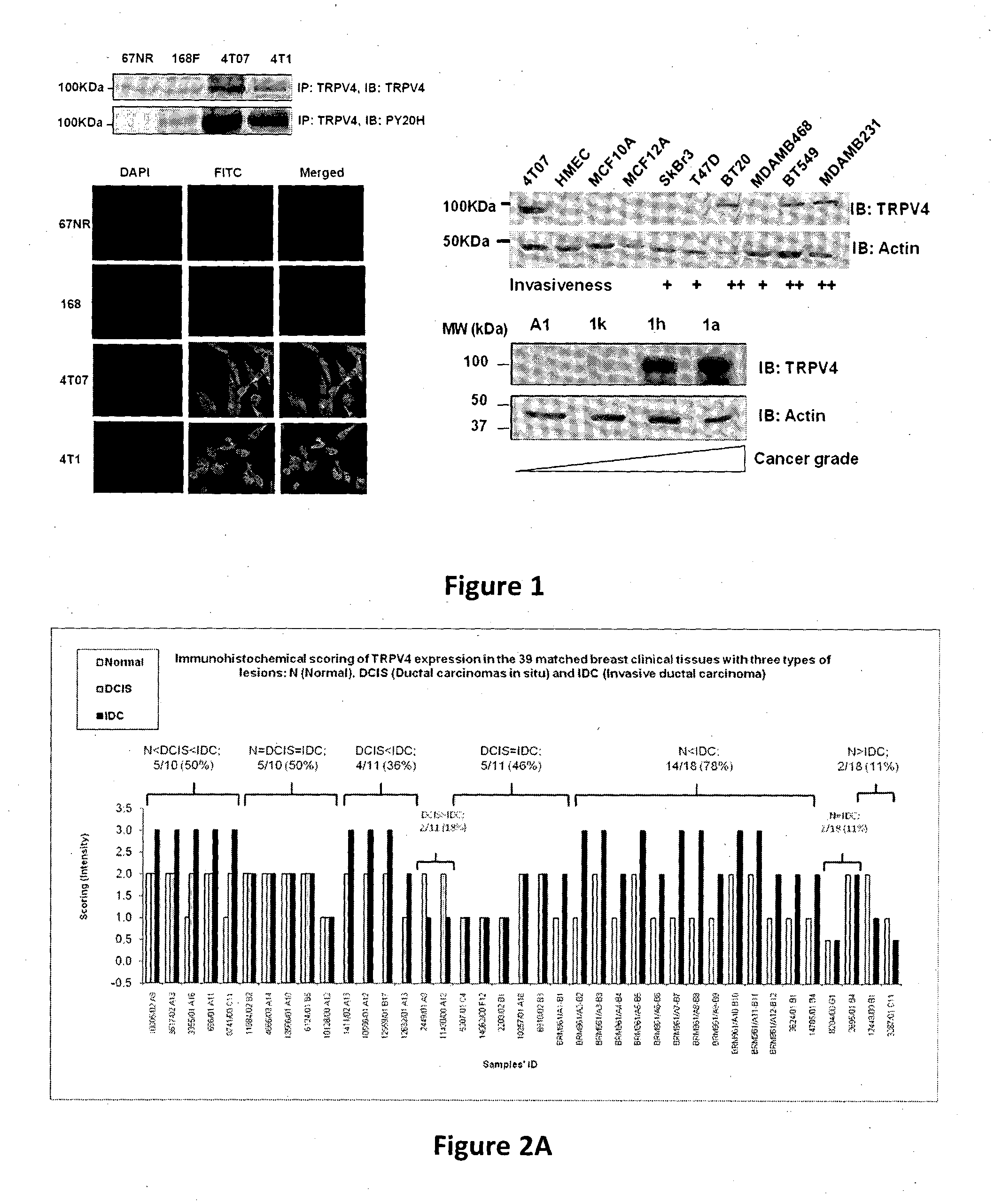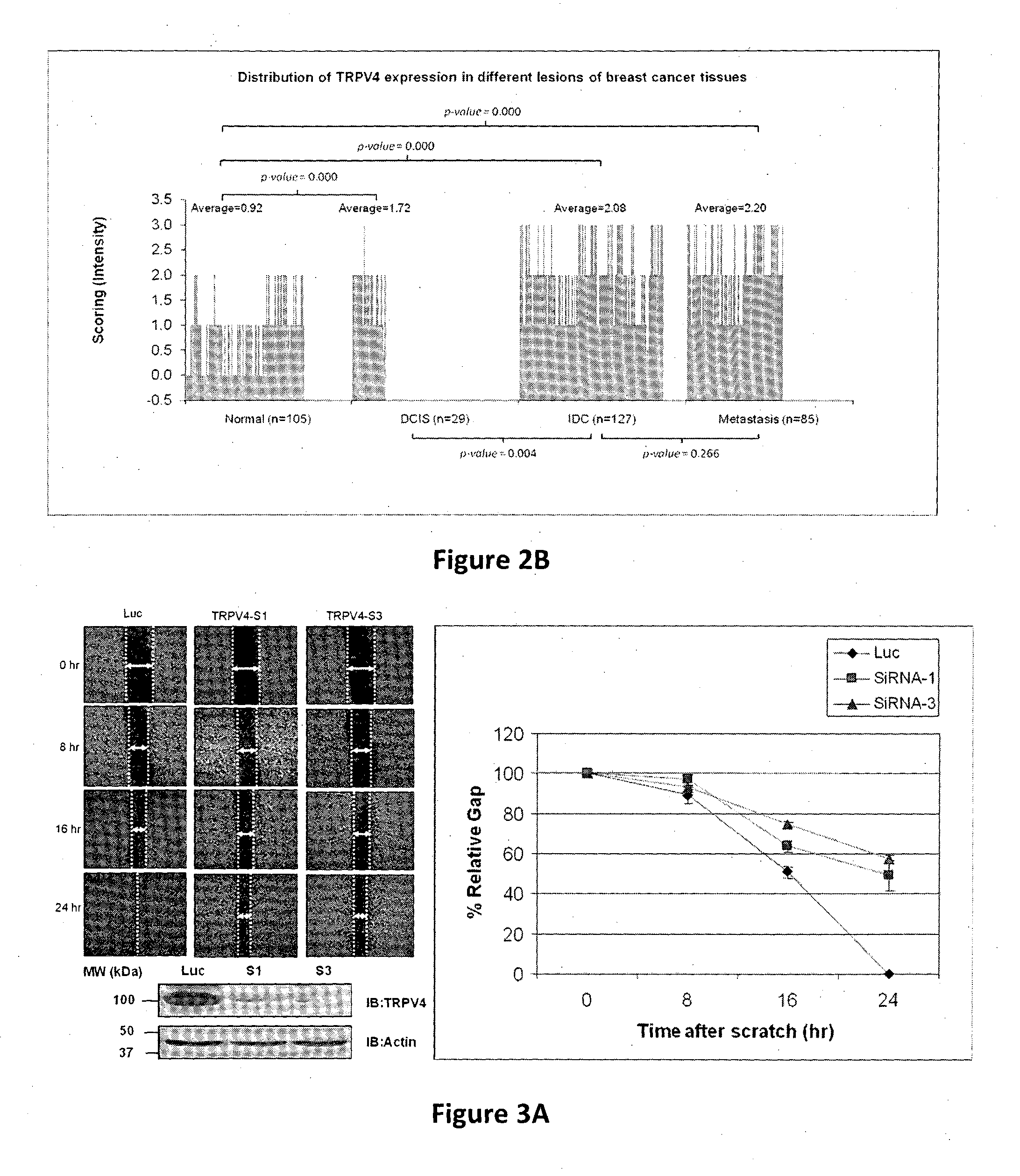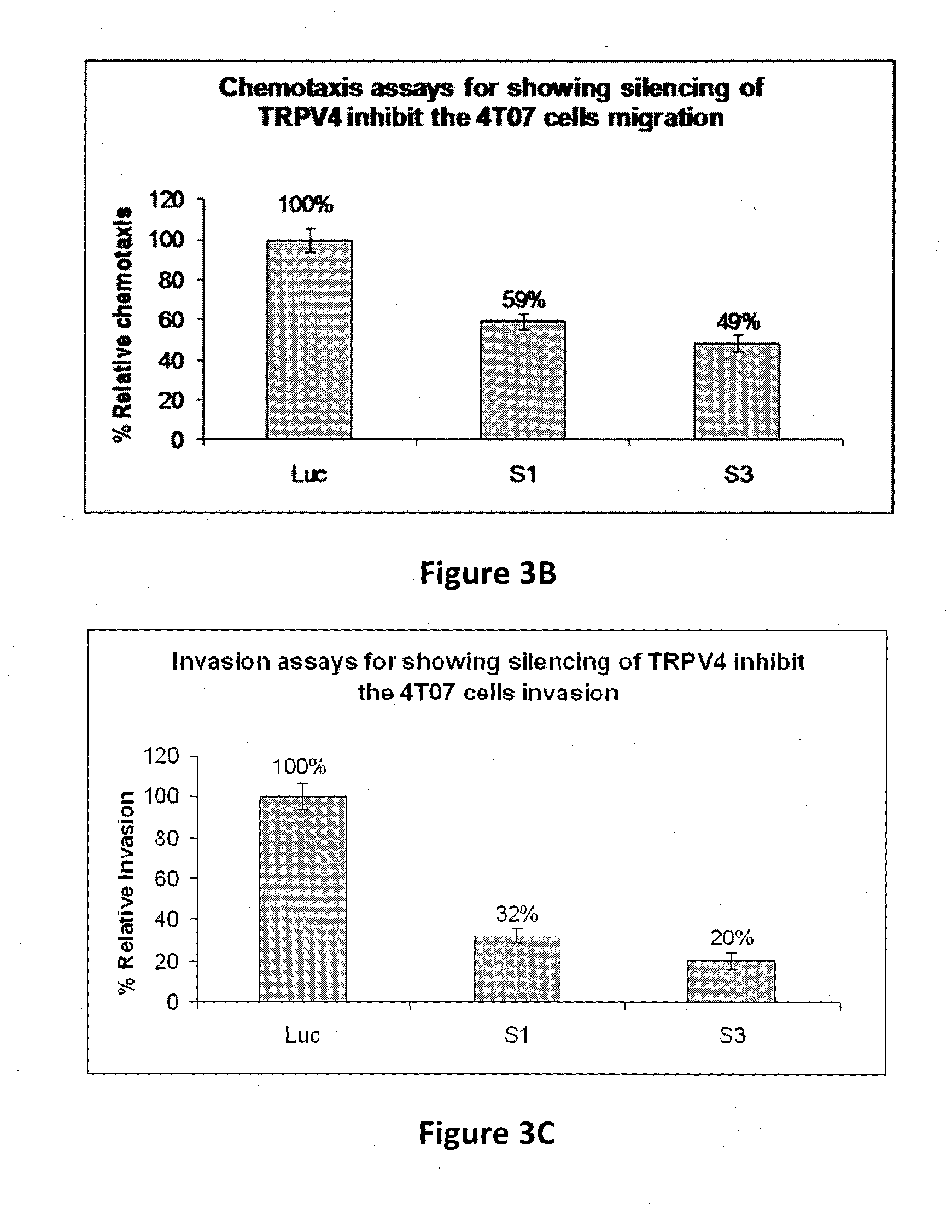Protein involved in detection of cancer metastasis and a treatment thereof
a cancer metastasis and protein technology, applied in the direction of immunoglobulins, peptides, drugs against animals/humans, etc., can solve the problems of ineffectiveness of tamoxifen in 35% of patients taking the drug, time-consuming and costly tests, and inability to detect metastatic sites. , to achieve the effect of not having a very high specificity, the detection of metastatic sites is difficult, and the detection is difficul
- Summary
- Abstract
- Description
- Claims
- Application Information
AI Technical Summary
Benefits of technology
Problems solved by technology
Method used
Image
Examples
Embodiment Construction
[0029]We conducted phosphorylation profiling of proteins across a biological model comprising 4 isogenic cell lines with increasing metastatic potential. Sixty phosphorylated proteins were confirmed to exhibit differential levels as breast cancer cells gained metastatic potential. TRPV4, a calcium channel protein, is for the first time shown to be elevated in breast cancer and regulated breast cancer cellular properties related to migration, invasion and metastasis.
[0030]According to the invention there is provided a diagnostic, or prognostic biomarker, TRPV4, capable of distinguishing between i) cancer and non cancer, ii) early and advanced / metastatic breast cancer and iii) detection and surveillance / monitoring of metastatic breast cancer during therapy. Antagonists to expression or activity of the TRPV4 polypeptide are able to decrease the metastatic traits of breast cancer both in vitro and in vivo providing compounds to treat cancer particularly breast cancer metastasis.
[0031]Pr...
PUM
| Property | Measurement | Unit |
|---|---|---|
| molecular weight | aaaaa | aaaaa |
| molecular weight | aaaaa | aaaaa |
| luminescent | aaaaa | aaaaa |
Abstract
Description
Claims
Application Information
 Login to View More
Login to View More - R&D
- Intellectual Property
- Life Sciences
- Materials
- Tech Scout
- Unparalleled Data Quality
- Higher Quality Content
- 60% Fewer Hallucinations
Browse by: Latest US Patents, China's latest patents, Technical Efficacy Thesaurus, Application Domain, Technology Topic, Popular Technical Reports.
© 2025 PatSnap. All rights reserved.Legal|Privacy policy|Modern Slavery Act Transparency Statement|Sitemap|About US| Contact US: help@patsnap.com



